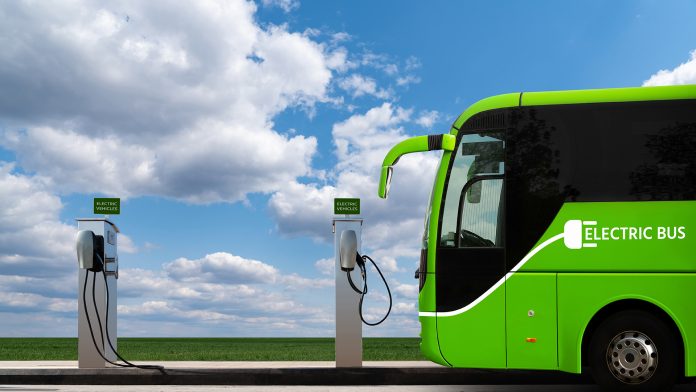Nuno Mendes, Head of Product Management at Stratio Automotive, discusses how transport operators can leverage digital solutions to fuel public transport efficiency.
The strict service level agreements (SLAs) that transport operators have in place with public transport authorities (PTAs) mean that to win contracts, operators must be able to guarantee a service that runs reliably, with no disruptions, and at the lowest possible cost per mile.
If those SLAs are not met, operators face hefty fines, which impact the bottom line. While reliability and cost efficiency have always been key elements of operator strategy, they are now more than ever of vital importance.
Digitisation offers one route to meeting these cost and reliability challenges. Technology has the power to disrupt the status quo across multiple industries, opening up massive opportunities to improve public transport efficiency and productivity.
To future-proof transport services, operators are looking at ways to leverage data to create an integrated ecosystem that makes their lives easier and can help them guarantee a reliable, cost-effective service to meet their SLAs with PTAs.
Digitisation challenges
However, there are hurdles to be overcome on the road to digitisation and public transport efficiency. Many public transport operators rely on legacy systems not designed to integrate with modern digital technologies.
These systems can be difficult to update or replace, making it challenging to digitise processes. Transport operators may also have multiple systems in place that do not communicate with each other, creating data silos.
This can make it difficult to understand operations and maintenance needs ultimately. Moreover, digitising operations and maintenance processes can be costly, particularly for smaller transport operators who must invest in new technologies, infrastructure, and staff training.
Creating an integrated view of maintenance and operations
The key to a successful digitisation strategy will be making an integrated view of maintenance and operations to avoid reliance on a single manufacturer, leading to inconsistencies and data silos.
Traditionally, vehicle diagnostic data has been accessed using either OEM equipment or third-party tooling, which can restrict the data an operator can access. As data becomes more and more important to public transport efficiency, ownership of the complete data set and the ability to display that data consistently across all bus makes and models in real-time will represent a potent tool and an operator requirement.
For this reason, public transport operators will need a solution that works across all brands and models and can talk to other systems so that the data can be fully leveraged and turned into intelligence.
The on-vehicle data communicating with workshop management systems and charge management systems in the case of electric vehicles are prominent examples of where this can benefit an operator, but many more examples are available.
Universal predictive maintenance & AI-powered analytics
A universal predictive maintenance solution allows public transport operators to harness this complete data set, creating an integrated view of fleet health and availability across all vehicle brands and models.
Data can be fully leveraged and turned into intelligence, impacting service reliability and running and maintenance costs. Whilst this is important for public transport efficiency and operation, it will be essential to transition to efficient electric buses. This relatively new technology will require operators to be ready and leverage data as they have never before.
However, maintenance managers are provided with real-time, actionable insights into individual bus components by harnessing the automated collection and analysis of vehicle data using AI-enabled predictive maintenance.
Maintenance and repairs can be scheduled more accurately, improving fleet utilisation and cost savings. But more importantly, vehicle breakdowns can be pre-empted by preventing equipment failure to reduce downtime and protect revenue, customer experience and SLAs with PTAs.
Predictive maintenance allows for the natural variations between vehicles assigned to different routes, saving time on visual inspections. Bus operators can depend on algorithms to spot patterns in the data collected to predict when a replacement brake pad will be required, for example, on a city bus which brakes more frequently than a long-haul, inter-city vehicle. Knowing when replacements will be needed, parts can be ordered in bulk, and maintenance scheduled during off-peak periods.

This reduces the costs associated with unplanned or pre-emptive part replacement, significantly reduces the downtime and related operational impact, and increases public transport efficiency.
Not only that, but predictive maintenance can also reduce the inefficient use of labour in many ways. The cost of having engineering staff available to attend service breakdowns is a clear example of where efficiencies can be made. If you know about a looming event preventing a vehicle from operating, you can attend to that defect before allocating the vehicle for service.
This then saves wasted time of attending to the vehicle on the road and a vehicle recovery cost in some instances. The benefit to the customer is obvious and avoids the penalties imposed by the contracting authority, resulting in substantial savings.
Moving from estimates to real-time data
By moving away from estimates towards real-time data, failures are predicted and planned for before they occur, and public transport availability is maximised so that buses stay on the road serving people.
In fact, with predictive maintenance, Arriva’s Czech Republic fleet tracked a 13.5% increase in time between failures, a 66% reduction in towing due to vehicle breakdown, and a total net cost savings of 2%/km/year.
Of course, an AI-enabled predictive maintenance solution doesn’t eliminate the need for solid, knowledgeable service teams. Instead, it enables the digitisation of repetitive, mundane tasks that are time-consuming and prone to error.
Automating jobs such as odometer readings, coolant checks, oil changes, and more frees teams to perform higher-value tasks that contribute more to the network. In addition, the system can proactively alert engineers of possible risks, enabling improved intervention planning and public transport efficiency.
Environmental and safety benefits
Predictive maintenance solutions can also inform eco-driving strategies and hasten the transition to electric buses to reduce the carbon footprint of road usage further.
Driver metrics can be used to lower fuel consumption and implement a range of continuous improvement processes. For example, Arriva Czech Republic has saved 942 litres of diesel per vehicle per year. The impact on driver performance by leveraging the available data has also resulted in a total traffic accident reduction of 47%, making public transport service far safer for passengers.

Arriva also uses predictive maintenance to monitor 115 electric buses in The Netherlands to accelerate the transition to electric vehicles and achieve total public transport efficiency. This has helped them address challenges such as the importance of battery pack visibility and predictive battery analytics and leveraging contextual vehicle technical data to obtain accurate range predictions.
Bus operation and public transport efficiency realised
Predictive maintenance represents the only way for bus operators to accurately guarantee a service that runs reliably, with no disruptions, and at the lowest possible cost per mile.
By harnessing the vehicle data that is available to them, operators access intelligence that minimises unplanned downtime, saves money on resources and maintenance and avoids emergency repairs.
Using the digital stethoscope of predictive maintenance to listen to and monitor bus conditions and move towards the vision of zero downtime reliability is critical if operators want to ensure public transport efficiency and enhance their relationship with passengers and PTAs alike.









